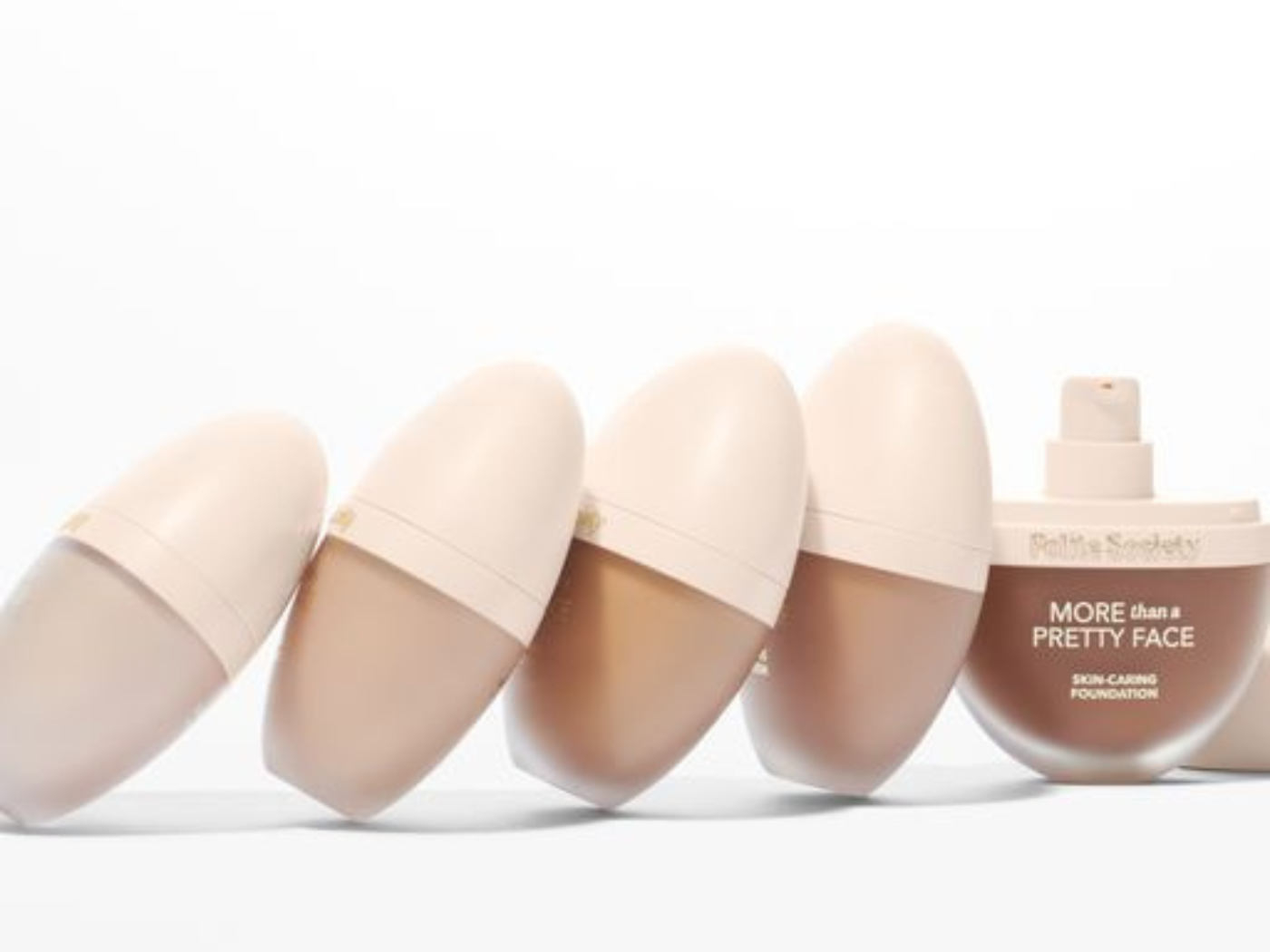According to recent NIQ (NielsenIQ) research, Amazon currently leads all retailers in beauty growth, with nearly 25% increases in both units and dollar sales. What’s more, NIQ reports that Amazon Premium Beauty growth has outpaced mass, 28.5 % to 17.5%. While Amazon has not publicly confirmed this data, it’s clear that this is an exciting time for the Amazon Beauty store. So, how does a premium brand ensure success reaching Amazon Beauty customers?
That question was posed to executives from leading beauty brands at a recent CEW x Amazon panel event, attended by over 250 beauty industry insiders from Clarins, L’Oréal, Dotdash Meredith, Peach & Lily, Expanscience Laboratories, NielsenIQ, Coty, NARS, StriVectin, L’Occitane, and others. The panel featured Ali Kole, Amazon’s Head of Premium Beauty; Emma Forschler, Senior Marketing Lead, Oribe Hair Care; Brinn Garner, Chief Revenue Officer, North America, Orveon Global (Bare Minerals, Buxom); and Penelope Giraud, General Manager, La Roche Posay. Over the course of the evening, the four panelists demystified what it takes to establish a premium brand in Amazon’s store, how to navigate pricing and discounts, the best ways to utilize Amazon’s ever-evolving technology—and more. Here, their playbook for thriving in Amazon Premium Beauty highly competitive space.
Winning Amazon Strategy #1: Leverage Amazon Beauty Technologies to Convey a Compelling Brand Story
Amazon started selling beauty products online in 2004—then launched the Premium Beauty store in 2013 to provide a differentiated, more elevated selling environment for premium brands. To be truly successful in Amazon Premium Beauty, Kole says brands must create a clear, compelling story with consistent messaging, including well-written product detail pages that are educational and include beautiful imagery.
“Amazon offers premium beauty brands the tools they need to educate customers and help them discover and understand what’s right for them. We are invested in driving technology innovations that elevate the shopping experience and make it more immersive, which then allows brands to use their unique imagery, words, and stories. This works best when the content is very good – clear, compelling, and differentiated,” says Kole.
Oribe, which joined Amazon’s Premium Store in 2015, understood the assignment. “Ali and her team upped the ante with enhancements they made to the premium shop, like new storefronts and A-plus content options. This really allowed us to show up as a luxury brand on Amazon in a way that maintains Oribe’s identity and enables us to execute the look and feel we want,” says Oribe’s Forschler.
Orveon’s Garner concurs: “The myth is that you can’t build a beauty brand in a premium way on Amazon. But look at our brand adjacencies—Oribe, La Roche Posay. We’re surrounded by incredible beauty brands. And look at the aesthetic Amazon offers: You have your own brand boutique, where you can essentially mirror your own brand site, meeting the customer wherever they are and building the best experience without compromising your brand’s image or strategy.
Winning Amazon Strategy #2: Lean into Their Marketing Initiatives (and Make Sure Your Inventory’s Well-Stocked)
In 2023 alone, Amazon ran Prime Day, Prime Big Deal Days, Black Friday and Cyber Monday, and the Summer and Holiday Beauty Haul events focused on beauty deals —plus they offered beauty brands opportunities to be showcased to Amazon beauty influencers. The retailer also invited beauty brands to participate in other parts of the Amazon customer experience, like Prime Video and Thursday Night Football.
Participating in these sales promotions, of course, drives volume for brands (“It’s important to do the basics well – make sure your products are in stock!” says Kole), but it also brings visibility. “One thing that maybe isn’t as well known is that those promotions are tremendous new customer acquisition vehicles,” Kole explains. “These are discovery moments.” Amazon also offers beauty brands advertising tools that help re-engage the customer when it’s time to replenish and to surface relevant products from the same brand.
Even brands that rarely discount find value in these promotional periods as they often see a sharp increase in traffic. This past October, Oribe did not participate in Prime Big Deal Days, “but we saw a 50 percent uptick week over week on product page views,” says Forschler.
Winning Amazon Strategy #3: Leverage Amazon’s Technology to Meet Your Customers Where They Are
In Amazon’s early days, some feared shopping for beauty online would not provide the rich, engaging experience you might get at a boutique or department store. But now, thanks to Amazon’s relentless pursuit of innovation, selling via the retailer allows premium brands to access shoppers wherever they are, via shoppable videos, livestreams and other immersive experiences. For premium brands, this is a valuable way to reach and engage with new customers—and to maintain customers who might be seeking a variety of experiences, both in person and virtual.
“Being on Amazon has been very complementary to the rest of our business,” says Giraud. “Our top sellers on our brand website are not the same as the bestsellers on Amazon. Amazon is attracting a different type of consumer who is looking for different content and different products. Also, Amazon has this incredible capacity to recruit new consumers for La Roche Posay, driving traffic in a way our brand website could never do.”
Although Bare Minerals and Buxom have only been on Amazon for a short time, Garner says they too are already seeing how Amazon’s technology is helping them connect with consumers in a new way. “Search data showed us that there was a huge demand for our brands— and we know the supply chain with Amazon is unparalleled,” says Garner. “For anyone who is trying to build a business or grow brand equity with your customer base, you cannot top Amazon’s supply chain reliability. Being on Amazon means we can meet the customer whenever, wherever they are.”
Winning Amazon Strategy #4: Tap into Amazon’s Data and Conversion Metrics
Thanks to Amazon’s massive team of engineers and data scientists, the retailer is also at the forefront of a number of emerging technological strategies, including shopping personalization using data and AI, which offer brands unprecedented insight. Brands are able to glean insights from tens of millions of Amazon Beauty customers, helping brands better understand how customers discover a product, decide it is right for them, and ultimately make a purchase.
Oribe’s Forschler points to this customer base, as well as the retailer’s vast advertising services as an incredibly valuable way to connect with new consumers. “If we have a new product launch, I’m tapping into Amazon to hit all of the qualified beauty shoppers there,” she says. “Amazon allows us to build our brand together, and all boats rise with the tide.”
Forschler also points out that Amazon’s repurchasing capabilities and superior fulfillment practices allow for loyal customers who want their favorite products to show up on their porches like clockwork to easily do so.”
“What’s amazing,” says Garner, “is how easy conversion is within Amazon. You see a definite return on your investment. So much so, that if you see a trend go viral and you have a product that fits within the trend, you’re like, ‘Thank goodness we’re on Amazon.’”




